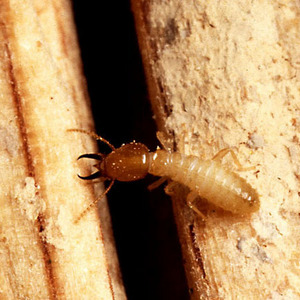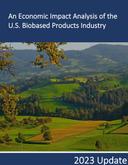Understanding termite digestion could help biofuels




USDA Agricultural Research Service
February 20, 2013
BY Purdue University
A termite's own biology with help from microorganisms called protists, are keys to the insect's digestion of woody material, according to a Purdue University scientist.
Michael Scharf, the O. Wayne Rollins/Orkin Endowed Chair in Urban Entomology, studies termite digestion to improve biofuels production and find better ways to control termites. The U.S. Department of Agriculture estimates the cost of controlling termites and repairing damaged homes is $2 billion each year in the United States.
Much of the study on how termites break down woody materials, which focused on the symbiotic relationship between the insect and the bacteria living in its gut, found that bacteria apparently have little, if anything, to do with termite digestion.
Scharf and collaborators at the University of Florida wanted to see how diet affected those bacteria. If the bacteria play a role in digestion, the type of materials the insect eats should affect the composition of the bacterial community living in the termite gut.
Advertisement
More than 4,500 different species of bacteria were cataloged in termite guts. When multiple colonies of termites were independently fed diets of wood or paper, however, those bacteria were unaffected.
"You would think diet would cause huge ecological shifts in bacterial communities, but it didn't. We didn't detect any statistical differences," Scharf said.
What they did see were far more significant changes in gene expression in the termites and the protists that live in the insects' guts along with the bacteria.
"The bacteria communities seem very stable, but the host and the protozoa gene expression are changing a lot based on diet," Scharf said.
Advertisement
The scientists looked at 10,000 gene sequences from the termites and protists to determine which genes were expressed based on differing diets. Termites and protists fed woody and lignin-rich diets changed expression of about 500 genes, leading Scharf to believe those genes might be important for breaking down lignin, a rigid material in plant cell walls that isn't easily broken down when making biofuels.
"We see much more of the playing field now," Scharf said.
Understanding which genes are involved in digestion should help researchers track down the enzymes that actually break down woody materials in termite digestion. Those enzymes may be tools scientists could use to better break down biomass and extract sugars during biofuel production.
The National Science Foundation, the Consortium for Plant Biotechnology Inc. and the U.S. DOE funded the research.
Related Stories
The U.S. Department of Energy Bioenergy Technologies Office (BETO) announced up to $23 million in funding to support research and development (R&D) of domestic chemicals and fuels from biomass and waste resources.
The U.S. DOE has announced its intent to issue funding to support high-impact research and development (R&D) projects in two priority areas: sustainable propane and renewable chemicals and algal system cultivation and preprocessing.
Sens. Sherrod Brown, D-Ohio, and Pete Ricketts, R-Neb., in August introduced the Renewable Chemicals Act, a bill that aims to create a tax credit to support the production of biobased chemicals.
The Chemical Catalysis for Bioenergy Consortium, a consortium of the U.S. DOE’s Bioenergy Technologies Office, has launched an effort that aims to gather community input on the development of new biomass processing facilities.
USDA on March 8 celebrated the second annual National Biobased Products Day, a celebration to raise public awareness of biobased products, their benefits and their contributions to the U.S. economy and rural communities.
Upcoming Events










